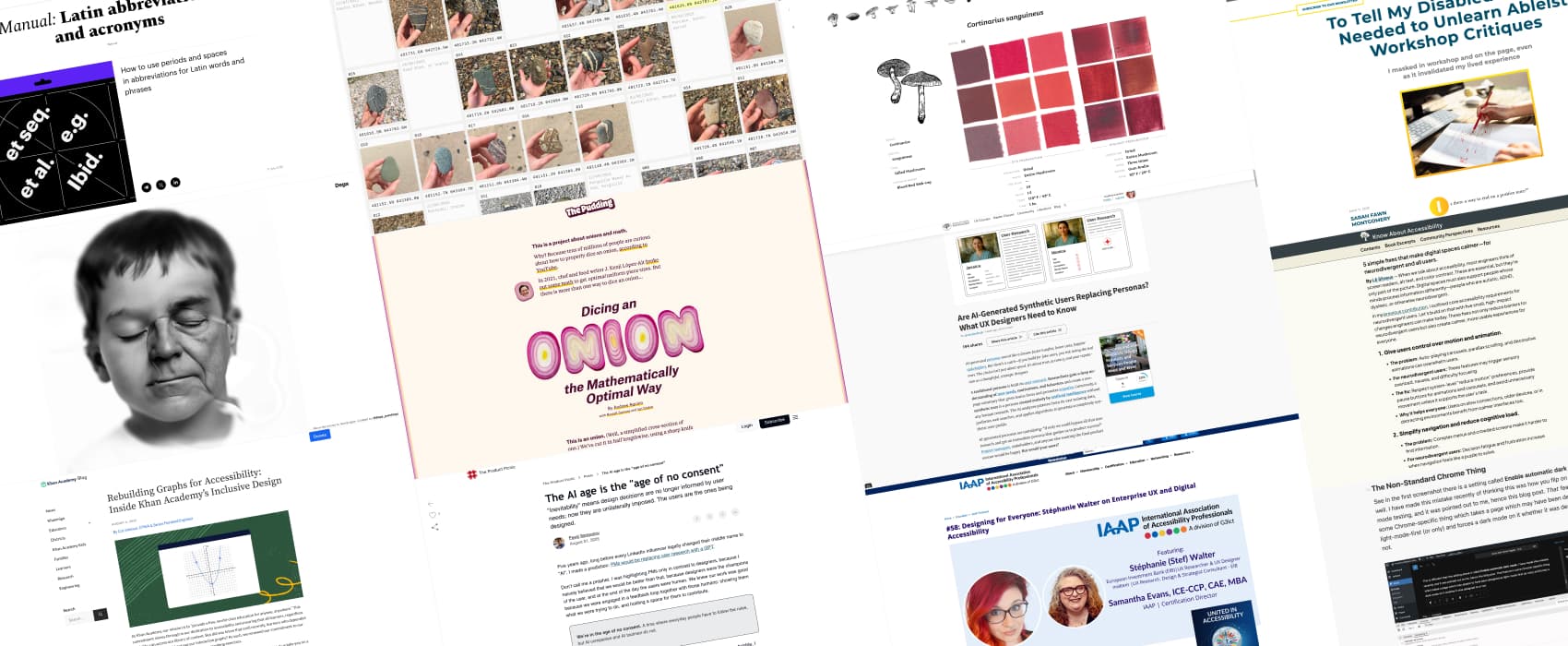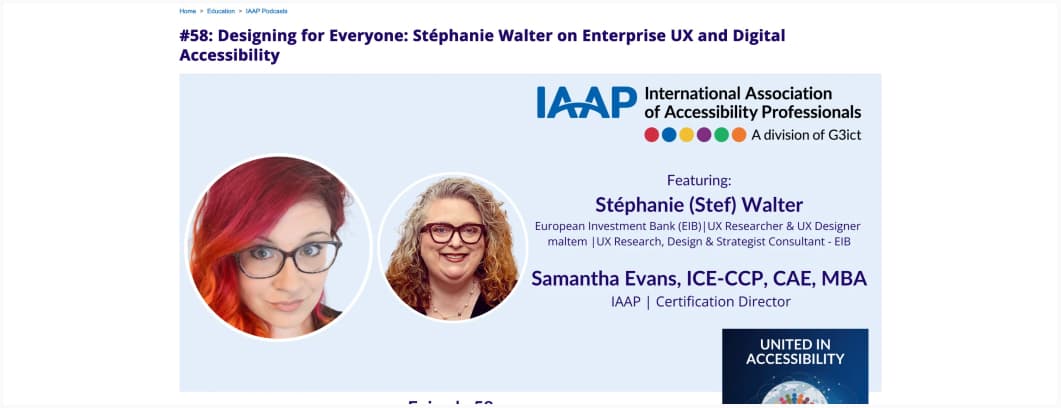
Pixels of the Week – August 31, 2025
Enterprise UX accessibility, math onion dicing & dyeing with mushroom pigments
Pixels of the Week is my weekly-ish curated newsletter for designers, UX folks, devs, and anyone building accessible, inclusive, usable (and let’s be honest, awesome) digital products. I share interesting articles, tools, inspiration, and resources I found during the week. This is the archive version. If you’d rather get it straight in your inbox (plus be notified when I publish other articles), subscribe to my newsletter.
Now: what I’m currently up to

Ever wondered why enterprise UX so often falls behind in accessibility?
I had the honor of joining the IAAP United in Accessibility podcast to dig into this with Samantha Evans. We had such a great time (we honestly could have chatted for hours).
Listen to the podcast (with transcript)
Most popular content this week
The AI age is the “age of no consent” (8min) AI isn’t optional anymore. It’s baked into everything, often without choice, consent, or accountability. Pavel Samsonov argues we are in the “age of no consent.” Data theft, manipulative design, and bots making life-altering calls are the new norm. The question isn’t if it’s wrong (sad). It’s: why does this feel normal now?
Interesting articles that caught my attention
5 simple fixes that make digital spaces calmer—for neurodivergent and all users. (5min) Give them control over animations, simplify navigation and reduce cognitive load, avoid rigid time constraints, minimize information density and visual clutter and support multiple inputs and interaction methods. Also, those benefit many other users beyond the neurospicy folks, so, it’s a win win! By Lē Silveus
Rebuilding Graphs for Accessibility: Inside Khan Academy’s Inclusive Design (8min) making graphs accessible isn’t easy, but it’s doable. That’s an interesting case study right there!
To Tell My Disabled Stories, I Needed to Unlearn Ableist Workshop Critiques “I wanted to write stories about bodies and brains like mine without having to justify that yes, this really did happen and, yes, I really did feel this way, and no, I was not exaggerating to garner attention or sympathy.”. This, yes, to all of this. An interesting story on how ableist writing workshops often dismissed or distorted their work about disability, pushing them to frame their life in ways that catered to abled audiences’ comfort rather than truth. And how to resist that.
Are AI-Generated Synthetic Users Replacing Personas? What UX Designers Need to Know (22min) short version: nope, they can’t, they lack the depth, accuracy, and context of research-based personas built from real users, they might be biased, and misleading. Obviously, right? So, what are they useful for? You could use them as proto-personas, as a starting point to build hypothesis. But, then, assess those with real user data.
Curiosity cabinet: non-design/tech rabbit holes I enjoyed
Dicing an Onion, the Mathematically Optimal Way when math meets food, my kind of geeky dataviz.
Inspiration: fun experiments, beautiful art, and great ideas
Piel an interesting interactive experiment: hover the face to see the person age (plays sound)
Mushroom Color Atlas I love creatives projects like that mushroom color atlas. Julie Beeler experimented with dyeing with mushrooms and documented a whole giant color palette, with instructions for each type about the specific process. I was expecting yellows and browns, but, some of those shades of green and blue are surprising. This is amazing.
nice.rocks, that’s it, just a collection of very nice rocks. I love those little corner of the internet.
Useful tools & resources
Manual: Latin abbreviations and acronyms hi, linguistic nerd me, loved this article. And gosh, I hate A.M. P.M. so much, it’s the reason I schedule my newsletter sometimes in the evening.
Tutorials
Adapting ChatGPT to Meet Neurodivergent Communication Needs (6min) a set of guidelines you use as custom instructions, to make your ChatGPT more inclusive if you are a neurodivergent person. It includes instructions about communication clarity, pacing and processing, predictability and structure, sensory and cognitive load management, emotional and social safety, interaction control etc. And a custom prompt you can copy paste to make it apply those rules. Personal advice: if you want to test this, create a custom GPT to see it if fits what you like. You can test and it tweak.
Quick Dark Mode Toggles how to use Chrome, Firefox, Safari or OS settings to test you dark / light modes.